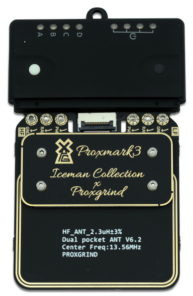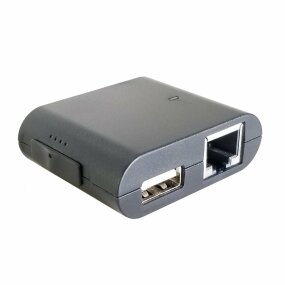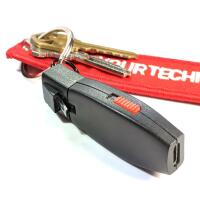I wanted to put together a few thoughts I had on gifts for my fellow hackers this holiday season. I’m including a variety of different things to appeal to almost anyone involved in information security or hardware hacking, but I’m obviously a bit biased to my own areas of interest. I’ve tried to roughly categorize things, but they tend to transcend boundaries somewhat. Got a suggestion I missed? Hit me up on Twitter.
Books
Quick Reference Manuals (RTFM, BTFM, HashCrack)
Though some have questioned the usefulness of having this material in printed form, I sometimes like being able to thumb through these for a quick reference. The 3 quick references I’ve used a bunch of times are:
- The Red Team Field Manual (RTFM)
- The Blue Team Field Manual (BTFM)
- Hash Crack: Password Cracking Manual
Each of these are quick translations of information for cases where you might not be familiar with the relevant information immediately, such as needed to run shell commands on a platform that is less familiar to you, or esoteric post-exploitation information at the last minute. Though internet through a cell phone makes it less critical, having this when onsite can be a quick win, and if you ever need to test or assess when in an area with no reception, it’s even more benefit.
Breaking and Entering
Breaking and Entering: The Extraordinary Story of a Hacker Called “Alien” is a mostly-true story about a professional hacker (penetration tester), detailing her start while a student at MIT through her career as a penetration tester. It details not only some of the information security-related hacks, but also other clever hacks and explorations in her life. It’s an exciting read, and I was super happy to see how detailed and accurate the recollection is.
Cult of the Dead Cow
Cult of the Dead Cow: How the Original Hacking Supergroup Might Just Save the World is a great history of the early days of hacking and hacking groups. cDc is probably the single most influential hacking group, and is responsible for many of the tools that are used by information security professionals today. With significant overlap with l0pht (another influential group), the group helped to shape what hacking is today and has had significant influence that many individuals may not realize. Those outside the hacking scene may take many things for granted that are influenced by cDc. Whether you realize it or not, they shaped the internet of today, and this is a well-researched read into their history and influence.
Electronics
Encrypted Flash Drive
This encrypted flash drive has hardware-based encryption to protect the data contained on it. Because the security is hardware based, it’s workable with any operating system or hardware platform. It’s also immune to hardware keylogging. It uses a PIN pad to support input of the passcode, and the operating system can’t interact with the drive at all until it is locked. The downside of hardware encryption is that it is very hard to verify or audit, but I believe the quality of this particular flash drive to be relatively high. Though these drives are expensive for the capacity, they’re not all about dollars per gigabyte – the features are in the firmware. It’s available at least up to 64GB.
Keysy RFID Duplicator
The Keysy RFID duplicator lets you clone various forms of RFID credentials either into its internal memory, or into a writable card. Though it’s dead simple to use, it’s not as flexible or sophisticated as an RFID hacking tool like the Proxmark. It’s super useful for cloning things like apartment gate fobs or basic proxcard authentication systems for access control. It won’t work for anything using encryption or handshaking. It also only works on low-frequency (125 kHz) RFID technology, which tends to be the unencrypted cards anyway.
Proxmark3 RDV4
The Proxmark3 RDV4 is an RFID hacking kit. Unlike the Keysy, this is for those interested in more advanced RFID hacking, including cracking encrypted RFID cards, or researching custom RFID implementations. This supports both 125 kHz and 13.56 MHz RFID cards, and due to the customizable firmware, it can be adapted to run just about any protocol known. There are even some offline modes that don’t require a connection to a computer to hack the RFID cards (such as automatic cloning or replay).
- Can pretend to be either a card or reader.
- Sniff communications between other readers & cards.
- Operate standalone
- Multiple RFID modes supported.
Yubikey 5
The Yubikey 5 is a hardware security token for a variety of purposes. Most obviously, it offers support for U2F/FIDO2/WebAuthn for account login on sites like Google, GitHub, Dropbox, Coinbase, Lastpass, and more. This is a 2nd factor authentication mechanism that can’t be phished or attacked via mobile malware.
The Yubikey 5 also supports a smartcard mode where it can store OpenPGP and/or SSH keys in its secure memory, protecting them against local malware attempts to steal the keys.
Packet Squirrel
The Hak5 Packet Squirrel is a great little Man-in-the-Middle device. With dual ethernet interfaces, it’s a physical MITM, so not vulnerable to the kinds of detection that work against ARP spoofing and other techniques. It’s a great option for a penetration test drop box, as well as things as simple as debugging network problems when you can’t run a packet capture on the endpoint itself. It’s USB micro powered and supports pre-programmable payloads via an external switch, so you can have it ready to perform any of several roles, depending on the situation you find yourself in. It runs a full Linux stack, so lots of capabilities available there.
Shark Jack
The Hak5 Shark Jack is a tiny implant with a small battery built-in. This battery allows it to be completely self-contained, needing only an ethernet port to plug into. This is perfect for when you find that ethernet port behind a piece of furniture and can deploy your implant quickly. This isn’t an implant to leave in place – the battery only lasts about 10-15 minutes. (Though I suppose you could power it via USB-C, so it’s not impossible to run it that way.) By default it will do a quick nmap scan and save it to the internal flash, but you can, of course, script it to do anything you want when plugged in. Like the Packet Squirrel, theres a switch to choose the mode you want to run.
Travel
Anker 60W Dual USB-PD Charger
Anker is one of my favorite manufacturers of chargers, USB battery banks, etc. I’ve had very good experiences with their products, and this 60W USB-PD charger with 2 USB-C ports is one of the most compact and capable USB-PD chargers I’ve found. It can charge two phones or laptops at the same time, or – best of all – one of each, which makes it great for travel (laptop + phone). Using Gallium Nitride (GaN) instead of Silicon transistors makes it smaller and more efficient than other models of USB power supplies.
Anker USB-PD Battery Pack
Like their USB-PD chargers, I’m super happy with Anker battery packs. My main travel USB power supply is a smaller and older version of this battery pack, but I have no doubt this one is also a great option. This battery is 26800mAh, which is about 99Wh, so just barely under the FAA 100 Wh limit for lithium ion batteries – in other words, this is the largest possible battery bank you can bring on an airplane in the US. It’s about 7 full charges of a cell phone, or a complete recharge of your USB-C powered laptop.
Travel Router
It’s amazing how useful a travel router is on the road. My current favorite is the AR-750S (Slate) from GL.iNet. The stock firmware is based on OpenWRT, which means you can do a wide variety of things by installing a stock OpenWRT build and then using the wide OpenWRT ecosystem of packages to enhance your router. Alternatively, you can build your own custom OpenWRT build with whatever features and configuration you’d like, using OpenWRT’s buildroot system. The router has a lot of hardware features, including both a core NOR flash and an expanded NAND flash.
Some of the reasons for using a travel router include:
- Single connection for multiple devices when you’re limited to a single connection (e.g., hotels)
- VPN connection for all connected devices.
- Drop device for penetration testing engagements.
- Local network for client-to-client comms (e.g., Chromecast)
There are also cheaper options like the GL-MT300N or the GL-AR300M if you don’t need all the power of the Slate.
Keyport Pivot
More than just travel, the Keyport Pivot is part of my every day carry. I have a tendency to carry too much, and that includes keys. My keys feel so much more compact and so much more organized when in the Keyport Pivot, which keeps them all together at once. I also carry the MOCA Multi-tool in my Pivot, which is a nice multi-tool that meets TSA guidelines, so is great for those that travel regularly. In fact, the MOCA is also available in a standalone format with a handle and paracord pull.
Tools/Maker
Raspberry Pi 4
The Raspberry Pi 4 is the latest generation of the venerable Raspberry Pi single board computer. This generation has entered the realm of being a full desktop for web surfing, etc., as well as an option for a home theater PC or emulating older console game titles. It even has enough processing power to pair with the Analog Discovery 2 to be a PC-based oscilloscope/logic analyzer. They’ve finally upgraded to Gigabit ethernet, so much better on the network (though it retains built-in WiFi support as well).
Circuit Playground Express
Adafruit’s Circuit Playground Express is the ultimate introduction to embedded devices. Programmable in either the popular Arduino IDE or CircuitPython, this takes the concept of an Arduino one step further. Instead of having to hook up lights, buttons, or sensors, they are all integrated into the one board. It includes two push buttons, an accelerometer, 10 RGB LEDs, temperature, light and sound sensors, and much more. It’s powered by an ARM microcontoller at 48 MHz to allow you to make use of all these inputs and outputs, and can be extended via the connections around the outside (which are large enough to use with alligator clips). If you or someone you know wants to learn embedded development without needing to do wiring or circuits themselves, this is a great way to get started.
iFixit Tool Kit
This iFixit Tool Kit is my go-to toolkit for opening and working with electronics. It has all the bits I’ve found on devices, including the “security Torx” bits, precision Phillips and slotted bits, and hex bits. The handle is a great size to both get a grip but also fit into tight spaces, and the flex shaft helps in even tighter spaces. The plastic spudgers and pry tool are great for getting into devices held together with clips instead of (or in addition to) screws. (Like the base plate on my Lenovo laptop, and so many electronic devices.) I’ve used some of the cheaper clones of these kits, and the pieces just don’t hold up as well as these do, or are made with materials that don’t perform as well.
Pocket Flashlight
This USB-rechargable pocket flashlight is a very useful tool to have on hand. Flashlights are obviously useful, but being rechargable is both eco-friendly and convenient, and being pocket-sized ensures you can always have it with you. (Or carry it in your bag instead of your pocket, which is my approach so I don’t lose it.) Streamlight is a well known brand with strong ratings and a history of quality, so this will keep going reliably.
Sugru
Sugru is a “Mouldable Glue”, which is basically an adhesive putty that holds fast when it cures. They are useful for making custom hooks, adding protection or strain relief to cables, waterproofing around openings, or repairing small breaks. As it’s silicone based, it remains slightly flexible and holds up well against water. I’ve used it before to seal around cables going through openings in enclosures and to make custom cable organizers.
Skeletool CX
Like the pocket flashlight, I like to carry a multitool with me daily. I’ve carried the Skeletool for a few years now, including a replacement after I accidentally got to the TSA checkpoint with one. (Oops.) This has a knife blade, pliers, and the ability to hold interchangable bits in the handle for a screwdriver. I’ve run into many occassions where this was useful, ranging from quick repairs to taking something apart on a whim, to opening packages. There’s even a bottle opener at the base of the handle, which is perfect for those adult beverages. (No corkscrew for you wine drinkers. Try screwtop bottles.)
This post contains affiliate links. If you click on a link, I may earn a small commission at no cost to you.
















